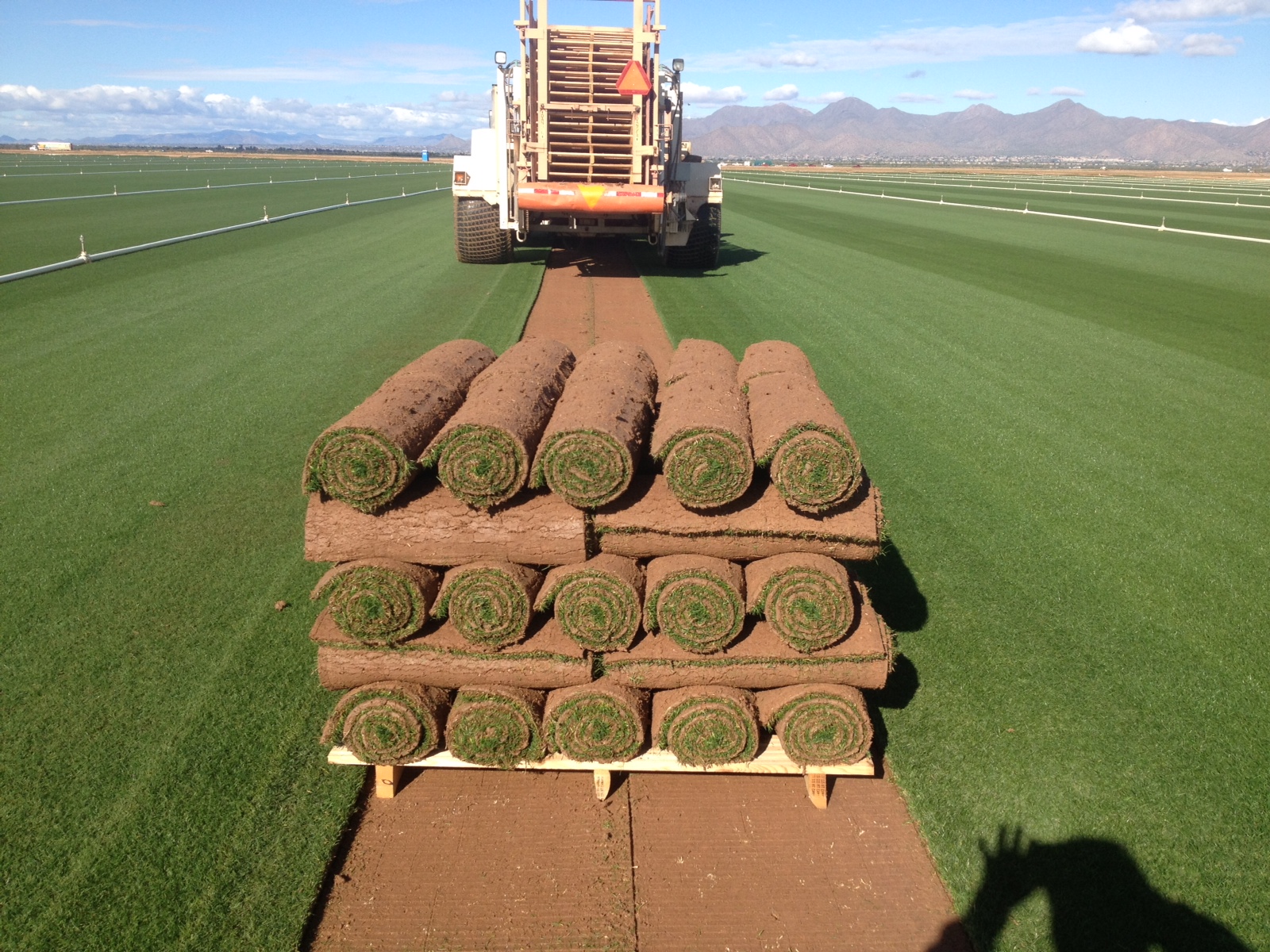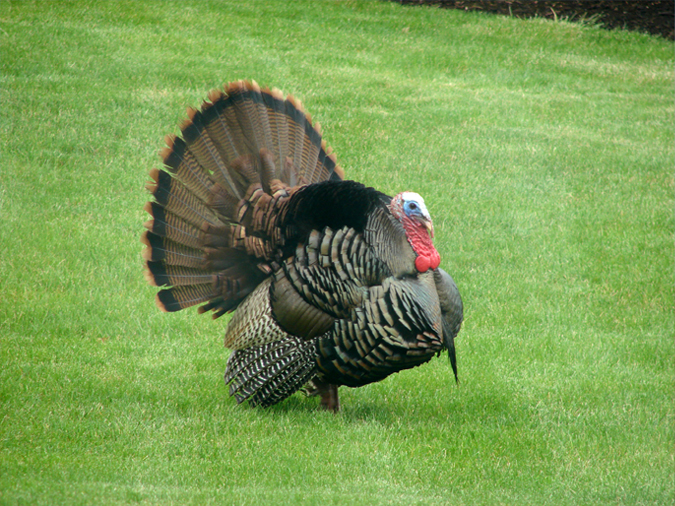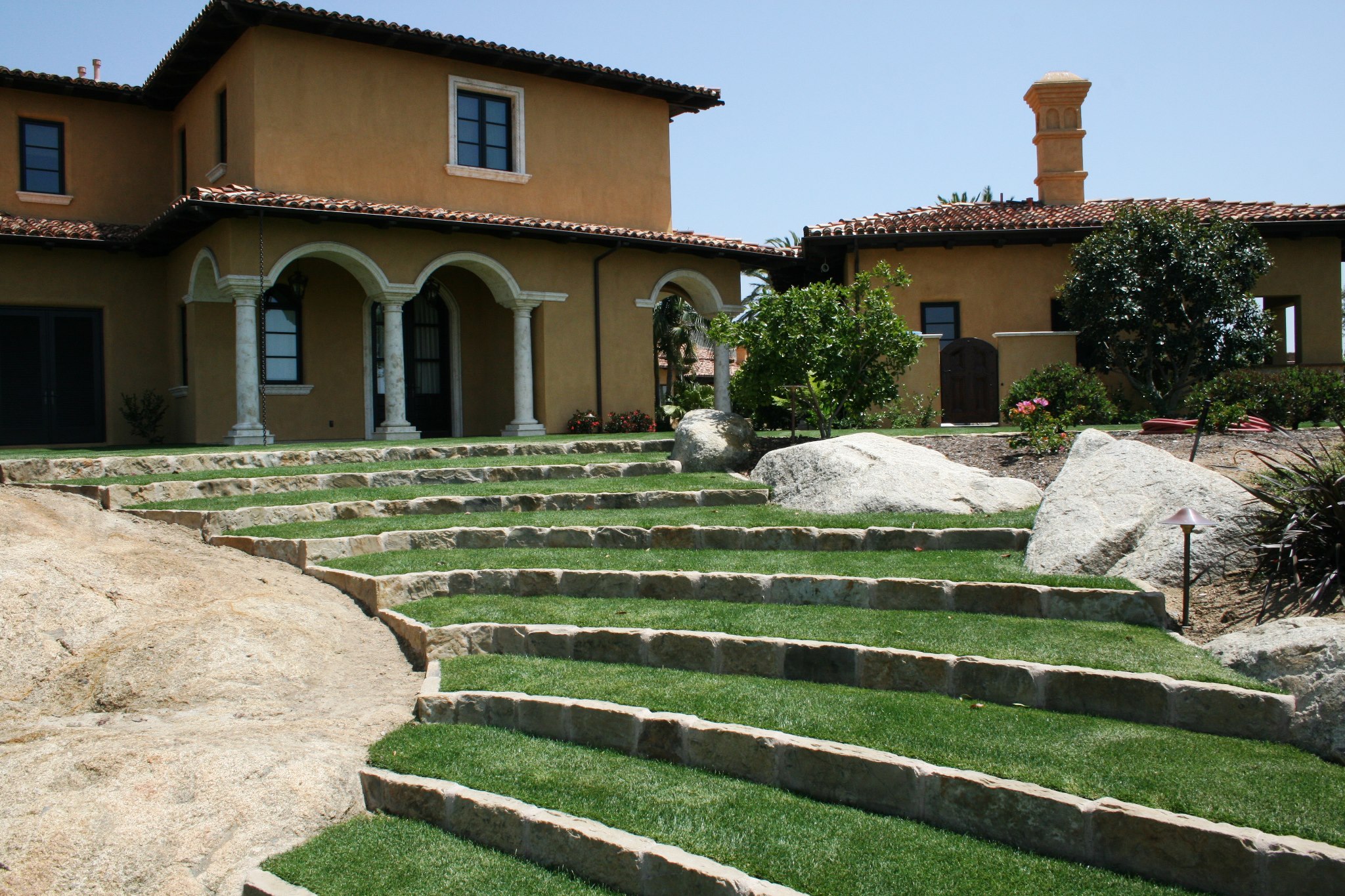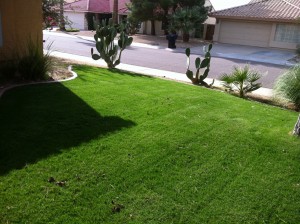Jun
Spring/Summer Transition and Your Lawn
We all know that transitioning from ryegrass back to a warm season grass is difficult (especially for California and Arizona sod), but throw in some cooler than normal weather and now you have a battle. Every year the producers of ryegrass seed seem to make their seed a little more heat resistant in search of that year round turf. The problem with this is that we’re shortening the growing window of our warm season turf. Not to mention that cool season grasses in the desert areas use much more water than the underlying warm season turf. The solution is to aide your lawn in transition, and to get your lawn free and clear of ryegrass in the next couple weeks.
Before I go into techniques to remove ryegrass I want to make a couple points about how the average lawn looks at this time of the year. We all love our winter lawn for its color, texture, and feel, but it’s important to remember that it puts agronomic stress on your lawn. When you have two different grasses competing for nutrients, water, and sunlight you’re bound to have an “ugly period.” The turf world refers to this as the transition period. This is the period of time when the cool season grass is starting to die off slowly and the warm season grass is trying to emerge. What creates the ugly period is the competition.
Comments Off on Spring/Summer Transition and Your LawnMay
Water Restrictions and Your Lawn. What Now? PART-2
So here we are, May of 2015, and for the first time in many of our lives we are being asked to cut our water usage by at least 25%. As I alluded to in PART-1 of using water wisely (please click here to read PART-1 if you have not already) many people view water consumption solely as an agricultural problem. It is easy to look at the percentages of water used by the agricultural industry and blame them for the water shortage, but have you considered that the real problem lies within us.
Did you know that over the past ten years the agriculture industry has lowered their water use rate from as much as 90% to less than 69% of total water consumed? Again many of you will look at the percentage of water used and say it is still too high, but the homeowner use rate has skyrocketed, while agriculture has learned to adapt and change.
Did you know the average family of four wastes 10,000 gallons of water a year waiting for hot water to arrive to their shower? Right there you can save 6% of your yearly water use. I know we’re supposed to be talking about landscape water rates, but more needs to be addressed than simply blaming one industry. I will be the first to tell you landscape water use rates need to go down. The average household wastes 16,000 gallons of water per year overwatering their landscapes. This is an additional 9% of your yearly water total being wasted. Today I will be giving you directions on how to not only save the 9% of overwatering, but I will also give you ways to save another 10% by watering smarter and using proper agronomic practices. I would be remised if I didn’t say this before I begin. Grass doesn’t waste water, people do. Read the rest of this entry »
Comments Off on Water Restrictions and Your Lawn. What Now? PART-2Apr
Water Restrictions and Your Lawn. What Now? PART-1
With the new water restrictions in California, I think now is a great time to revisit the proper way to irrigate your lawn. We have some say they will be taking out their lawns due to the water restrictions, but before you do so I think it is important to take everything into consideration.
We often see every issue in society as black and white, but there is always a grey area. We all take our own individual sides of an issue, but we need to take the time to find a middle ground. Just as is the case in the political spectrum one answer isn’t always correct. Two sides need to work together to come up with a way of solving our problems. Over the next week I will be writing a two part series on how to conserve water and have a great lawn at the same time. Read the rest of this entry »
Comments Off on Water Restrictions and Your Lawn. What Now? PART-1Feb
WEEDS! Pre-Emergent Herbicides and Your Lawn
Last week it was raining and in the low 60’s and this week we will be pushing the low 80’s. Everyone knows that the rain is great for our lawns but it is also great for producing weeds.
As we move through February it is important to think about your lawn from the previous year. Did you have weed issues? Were you constantly pulling spurge out of the lawn during the summer? Even if you didn’t have a bad case of this last year you should still think about putting down a pre-emergent herbicide. The window to apply these is from now until the end of February. If you miss the window and the seedlings have already germinated you can bet you will be on your hands and knees this summer pulling weeds out of your turf.
Comments Off on WEEDS! Pre-Emergent Herbicides and Your Lawn
Nov
Thanksgiving Tips for Your Lawn
As we approach Thanksgiving it is a good time to start thinking about your winter fertilizer program. In past blogs I talked about getting down a few fertilizer applications prior to the first frost of the year. In general we will receive our first frost sometime between Thanksgiving and the first week of December. The first couple of frosts are usually pretty mild, but as we get deeper into December we will get some hard freezes which will start to affect your roots. Once we get frost all the way down to the roots it makes it tougher for the plant to take up fertilizer so foliar applications generally provide the best response.
For those unfamiliar with why plants freeze let me provide you with a simplistic definition. Water vapor condenses into liquid water and forms ice as the temperature drops at or below 32 degrees. Temperatures on the ground are typically cooler than the air just a few feet above the ground surface. On a clear, calm night with no little wind the cold air sinks to the ground level and while the thermometer may not read 32 degrees or lower, the ground temperature is below freezing. You will notice that when there is a heavy cloud cover there is typically no frost. This is because the grass does not need to emit as much radiation because the clouds reflect the radiated heat. On a cloudy day dew will form on the ground making it very unlikely that frost will form on the ground.
Comments Off on Thanksgiving Tips for Your LawnOct
Watching Your (Overseeded) Grass Grow
By now most of you are probably doing what I do all day and that is watching grass grow. If you threw down seed to overseed your warm season lawn in the last couple weeks it surely has sprouted,and should be filling in quite nicely with our weather. It always amazes me how quickly ryegrass grows at this time of the year. You can check your lawn before you leave for work in the morning, and by the time you get home it has grown a ½”. It usually takes about 7-10 days to get your lawn really going, but once it does you will start to see the grass tiller and fill in any voids in your lawn.
Comments Off on Watching Your (Overseeded) Grass GrowAug
Evaluating Your Summer Lawn
As we move through the dog days of summer in California and Arizona, now is a good time to evaluate your turfgrass lawn. The summer is the optimal time to grow warm season turfgrasses so it is important to get good growth before the end of the season. The golden rule is that all warm season grasses need to have 100 days of growing without any competition in order to maintain their health. That is 100 days without any lingering ryegrass in the way. Think back to when the ryegrass was completely out of your lawn? Was it June or did it hang around until July? If you didn’t transition it by mowing lower and verticutting then most likely you still had some ryegrass until the humidity increased and wiped it out in July. Read the rest of this entry »
Comments Off on Evaluating Your Summer LawnJul
Using the Right Amount of Water
Lately there have been quite a few articles and stories talking about the over consumption of water in turfgrass. As many of us know parts of California have put strict demands on water usage and one of their main targets are home lawns. Over the past few years we have seen everything from districts paying home owners to take out grass, to people putting in artificial synthetic lawns. What we’re not seeing is a lot of information about how you can have a lawn and also conserve water. How do you know if you’re using water wisely? Today’s blog is all about tips for saving water and what you should be doing as a homeowner, landscaper, or golf course to help protect our natural resources. Read the rest of this entry »
Comments Off on Using the Right Amount of WaterJun
Dog Urine and Your Turfgrass–Can’t We All Just “Get a Lawn?”
Pets are as much a part of our families as our kids, and keeping them happy is important. Do you know what makes for a happy dog? A beautiful lawn!
Did you know that putting in grass has been shown to reduce ground temperatures by as much as 30 degrees? We continually see a trend for people to use rocks in their yards because they don’t like the perceived maintenance of a yard. In this day and age it is important to think about the environment. Sod cleans the air and helps recharge our groundwater supplies. Turfgrass is one of nature’s finest and least expensive filters, and works to improve the environment. The front lawn of just 8 homes has the cooling effect of 70 tons of air conditioning. Just think how happy you and your pets would be to walk around during the summer months if everyone had natural grass in their yard. You can have a beautiful lawn and be responsible if you water wisely. Grass doesn’t waste water–people waste water.
Comments Off on Dog Urine and Your Turfgrass–Can’t We All Just “Get a Lawn?”May
Soil Prep/Lawn Establishment
With the rising temperatures we have quickly entered the best time of the year to plant sod. I’m sure a few of you just read the first sentence and thought that I was crazy since we’re hitting 105-110 degrees most days. Warm season turf is so well adapted to this type of weather that establishing a lawn during the summer is a simple process with the right prep work and follow up. I’m going to outline some simple cost effective steps for those looking to put in a lawn this summer.
Living in the desert we all know that water is scarce so we want to do our best to preserve it and not overuse it. One of the best water saving tips is putting in an automatic sprinkler system. Before I proceed I will tell you that I don’t recommend putting in a new lawn without one. A good sprinkler system will allow you to put out the correct amount of water in a given period of time and will help eliminate waste.
Setting up a manual sprinkler or hose is inefficient, time consuming, and most of all it is very tough to gauge the amount of water you actually put out. Before putting in an irrigation system you should by a small gauge to check your homes water pressure. Knowing how much water pressure you have will determine how many sprinklers can be on each valve. Depending on the area you will be watering you may need a couple to several valves to correctly operate your irrigation system. Most sprinkler systems are set up with a valve that controls the drip lines to the plants and then a valve for each section of the turf. A home with 1000 square feet of turf will typically have two valves to control the lawn. If you have very low water pressure you will probably need to add a third valve so less sprinklers are running at one time.
Comments Off on Soil Prep/Lawn Establishment






